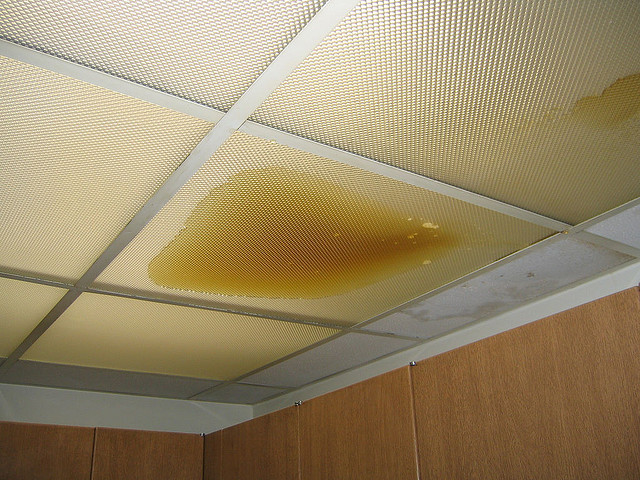Just how to Discover as well as Repair Work Water Leaks-- A Comprehensive Guide
Just how to Discover as well as Repair Work Water Leaks-- A Comprehensive Guide
Blog Article
Nearly everybody will have their own piece of advice with regards to Hacks to detect leaks.

Early detection of dripping water lines can minimize a prospective catastrophe. Some little water leakages might not be visible.
1. Take A Look At the Water Meter
Every house has a water meter. Examining it is a guaranteed way that helps you find leaks. For starters, turn off all the water sources. Ensure no person will purge, make use of the tap, shower, run the cleaning maker or dishwasher. From there, most likely to the meter and also watch if it will change. Given that no person is using it, there should be no movements. If it relocates, that shows a fast-moving leakage. If you identify no modifications, wait an hour or 2 and inspect back once more. This indicates you might have a slow leakage that could even be below ground.
2. Examine Water Intake
If you find unexpected adjustments, despite your intake being the very same, it means that you have leakages in your plumbing system. An abrupt spike in your costs indicates a fast-moving leakage.
A steady rise every month, also with the exact same routines, reveals you have a sluggish leak that's additionally gradually escalating. Call a plumber to extensively inspect your home, specifically if you feel a cozy area on your flooring with piping beneath.
3. Do a Food Coloring Examination
30% comes from toilets when it comes to water intake. Test to see if they are running appropriately. Decline specks of food color in the tank as well as wait 10 mins. There's a leak between the storage tank and bowl if the color somehow infiltrates your bowl during that time without flushing.
4. Asses Outside Lines
Do not forget to check your outdoor water lines as well. Ought to water leak out of the link, you have a loosened rubber gasket. One small leak can lose lots of water and surge your water costs.
5. Evaluate and Examine the Situation
Property owners must make it a habit to check under the sink counters as well as also inside closets for any kind of bad odor or mold growth. These 2 warnings show a leakage so prompt attention is required. Doing routine evaluations, even bi-annually, can save you from a major issue.
Examine for discolorations as well as damaging as most pipes and also home appliances have a life span. If you presume leaking water lines in your plumbing system, don't wait for it to escalate.
Early detection of dripping water lines can minimize a possible calamity. Some little water leaks may not be noticeable. Inspecting it is a guaranteed way that helps you uncover leakages. One tiny leakage can squander loads of water and also surge your water expense.
If you suspect dripping water lines in your plumbing system, do not wait for it to intensify.
How to Know If Your Home Has a Hidden Leak
Water Meter Reveals Inexplicable Water Usage
If you’d like to test whether or not there’s a leak somewhere in your home, you can do this using your water meter. Here is how to conduct the test:
Don’t use any water in your home for at least 30 minutes; this also means not turning on faucets or water-using appliances.
Go outside, and check your water meter for activity.
If your water meter shows that there was activity, even though no one was using any water, this proves that there is a leak in your home.Visible Mold or Mildew Growth
Leaks behind walls create moist, dark environments that allow mold and mildew to grow and thrive. Eventually, you might see mold growth forming on the wall closest to a hidden leak.
If mold is growing in an area that receives a high amount of moisture, such as a bathroom, it may simply be an indication that better ventilation is needed. However, if you see mold growth on a wall or the ceiling in an area where you would not expect, you probably have a hidden leak.
Musty, Mildew Odor
Sometimes you might not be able to see the mold or mildew that is growing as a result of a leak. However, the smell can give the problem away just as easily. If you catch a whiff of something musty, there’s a good chance that old water is collecting somewhere in your home that you can’t see.
Stained/Warped Walls, Ceilings, or Floors
When your home soaks up water, a variety of red flags can become visible, including ceiling stains, bubbling drywall, warped walls, and sagging floors. While these issues can be caused by excess humidity, they can also be signs that a pipe or plumbing connection has started leaking behind your walls.
Inexplicably High Water Bill
After a while, you get a general sense for what your water bill should be. If you own a pool or sprinkler system, your bill will tend to be higher during summer. However, if you receive a water bill that seems especially high, and you can’t figure out what caused it, then you may have a hidden leak somewhere that’s increasing your bill.
https://www.plumbingjoint.com/blog/2019/july/how-to-know-if-your-home-has-a-hidden-leak/

We hope you liked our article on Top leak detection hacks. Thanks a lot for taking the time to read through our piece. Feel free to take a moment to share this write-up if you enjoyed reading it. Thanks a bunch for your time. Kindly visit our site back soon.
Report this page